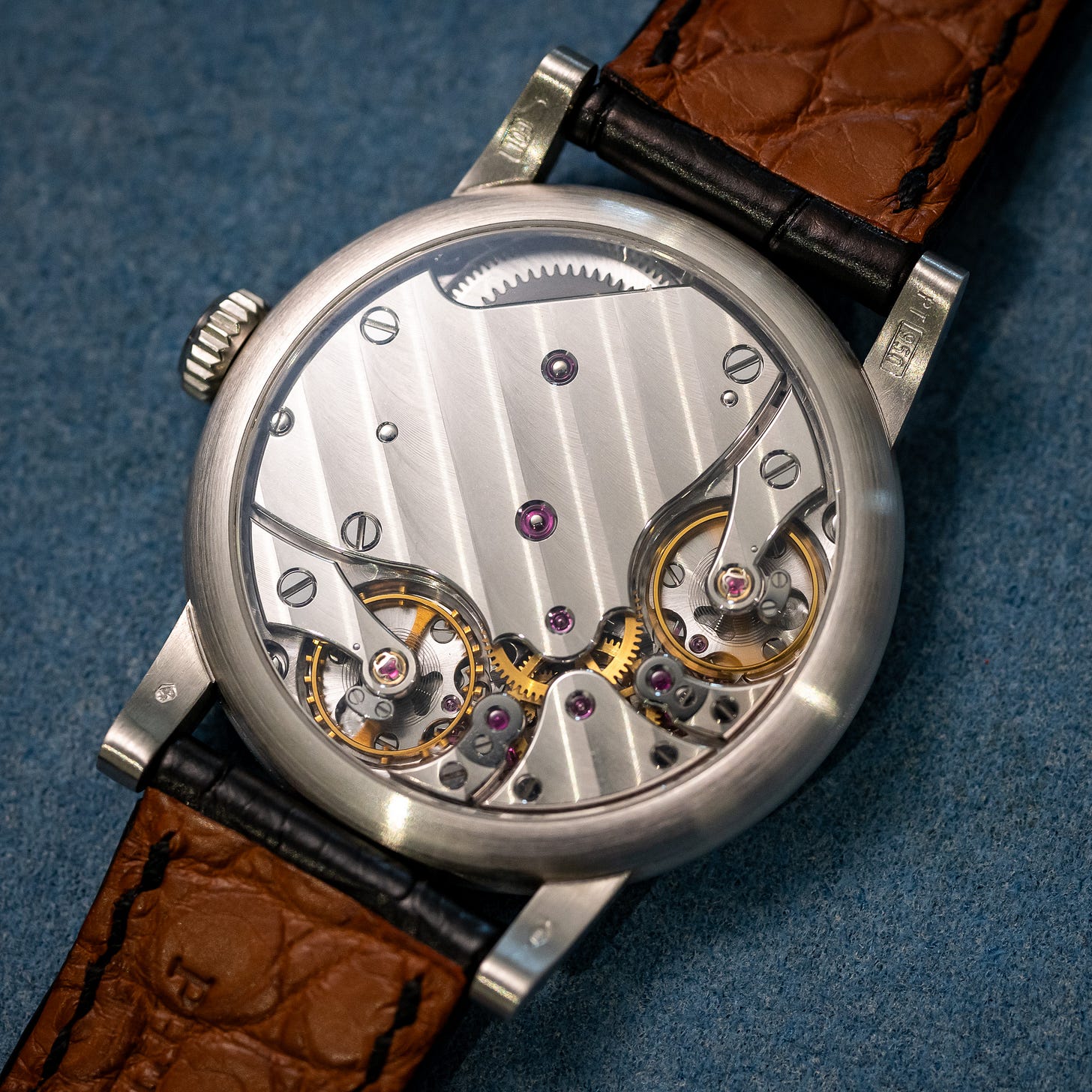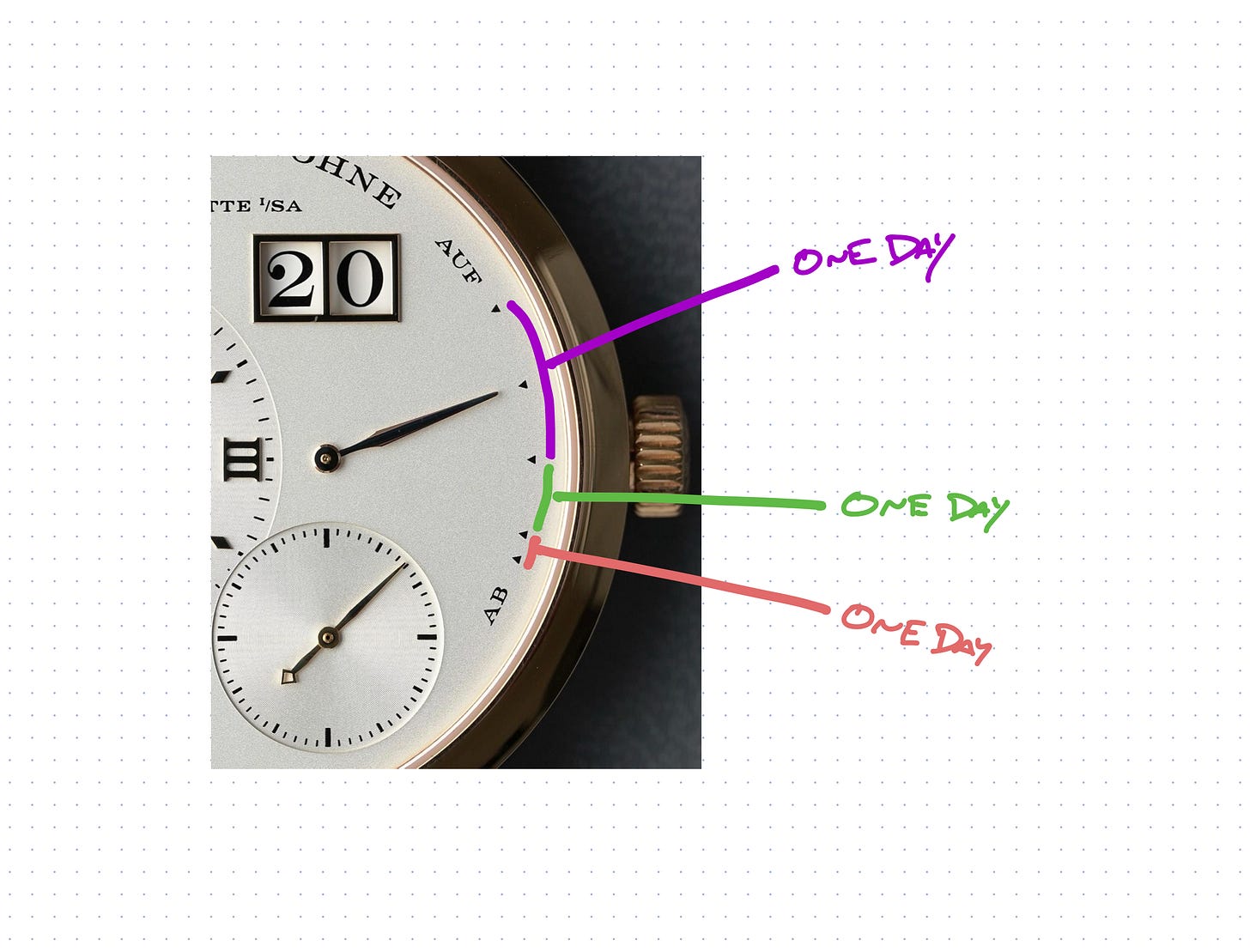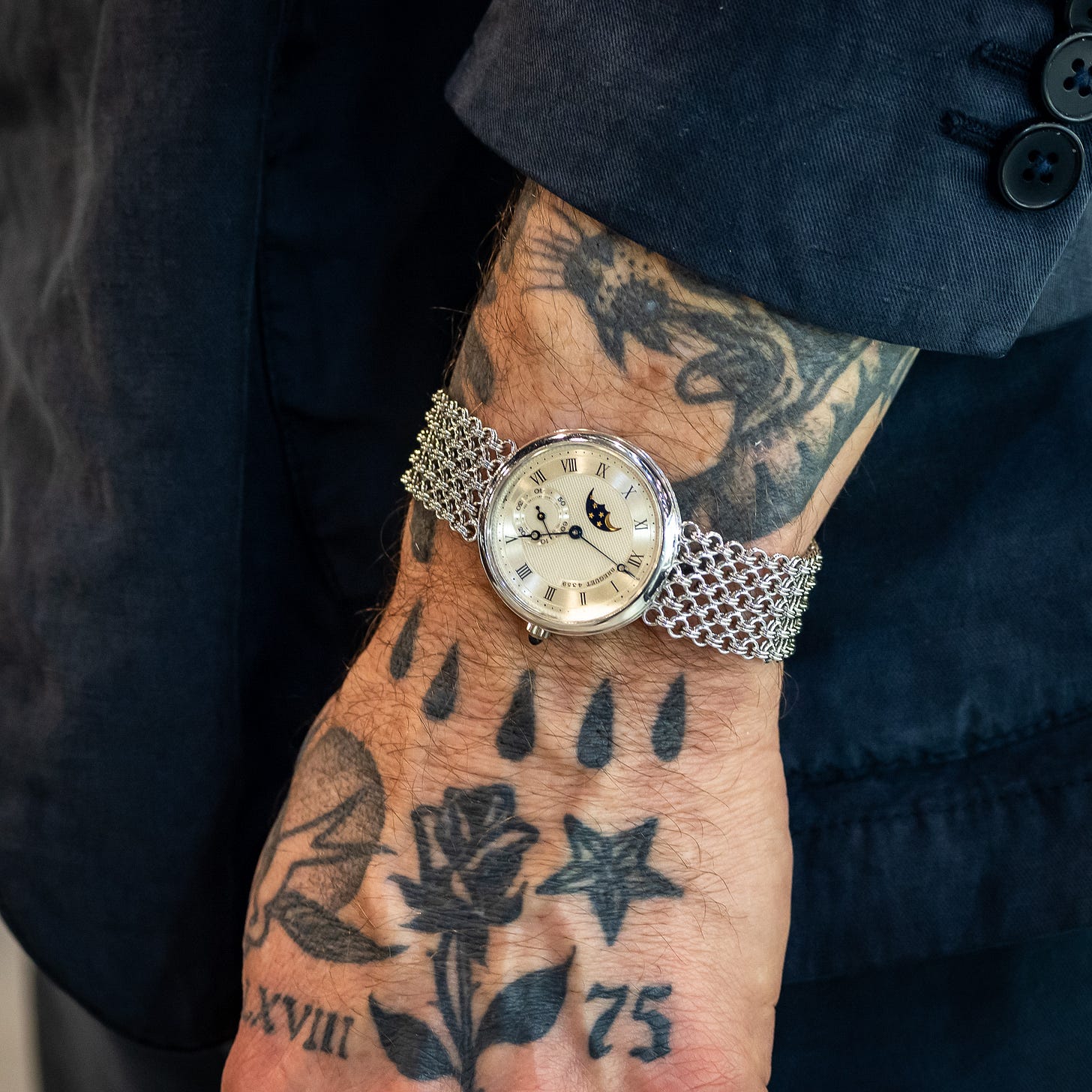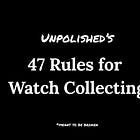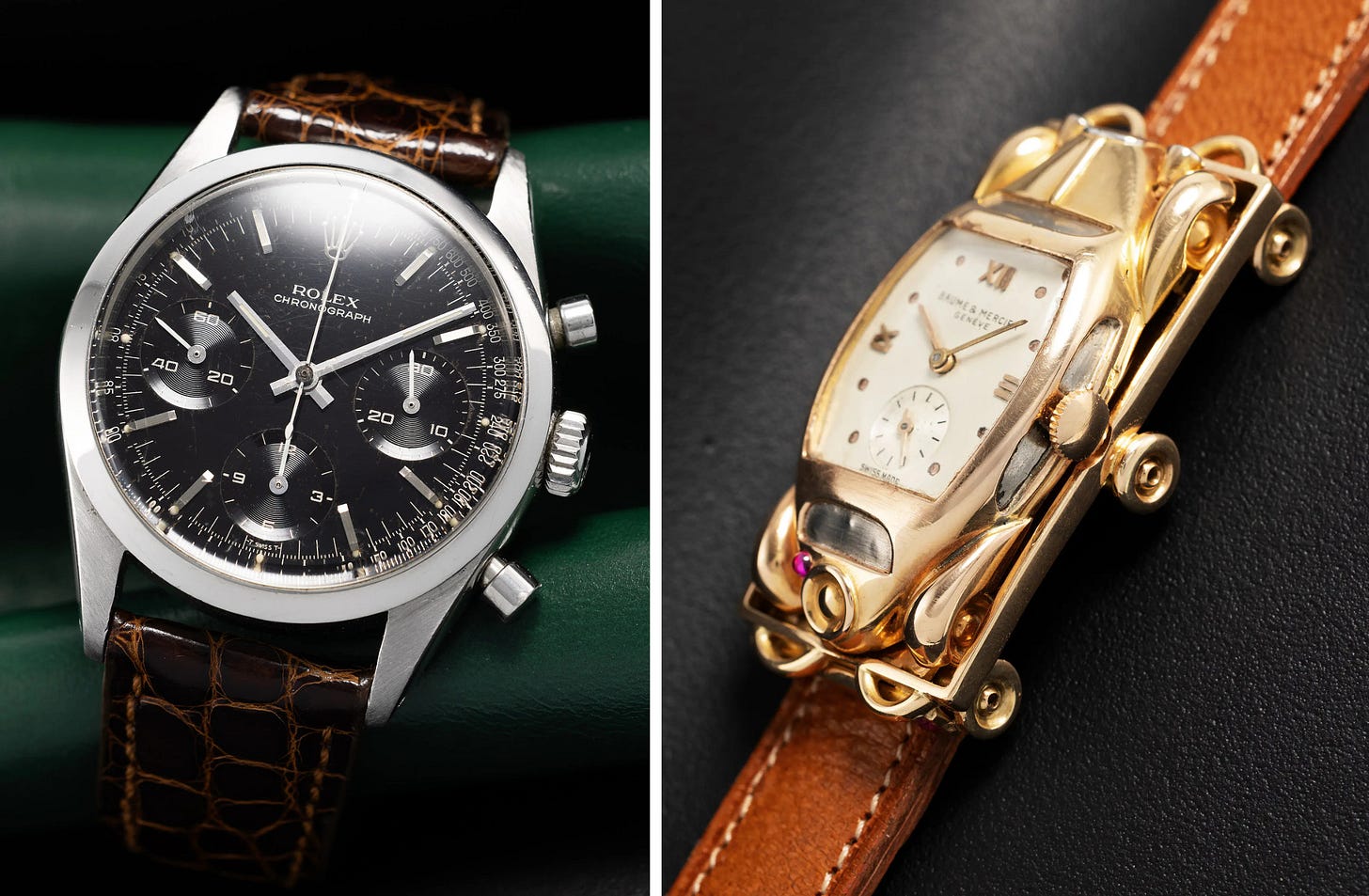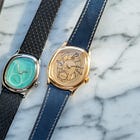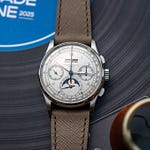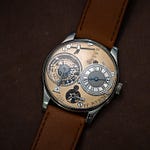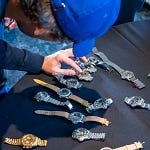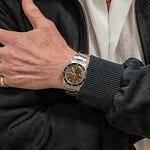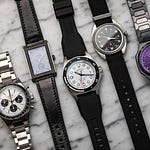Hello everyone. Like last week, today’s grab bag is also available as an audio issue. Listen above or find it on Spotify / Apple / RSS. It’s coming a little later because I saw Doechii on the first night of her Swap Tour here in Chicago. She’s awesome.
In today’s newsletter: Two ideas for indie watchmakers, when watch design changes behavior, why collectors have such a fetish for “firsts,” my favorite watch from Monaco Legend’s auction this weekend, and how to get banned.
AHCI at 40. The AHCI (Académie Horlogère des Créateurs Indépendants) is a non-profit of independent watchmakers founded by Vicent Calabrese and Svend Andersen in 1985. To mark its 40th anniversary, Europa Star ran a great roundtable with 12 of its members, including FP Journe, Philippe Dufour, and the newest, Shona Taine. Interest in indies is still hot, but nowadays watchmakers also have all kinds of opportunities to showcase their work on Instagram or wherever else, and AHCI is looking for ways to stay relevant as an arbiter of real independence. Journe was particularly outspoken, offering two ideas:
🥇 Grand Prix de l’Academie Awards: This takes the idea of the GPHG, Louis Vuitton Watch Prize, or Cartier Prize for Watchmaking and flips it on its head. Journe suggests the Academy awards and recognizes large brands for achievements in watchmaking. He says that brands might sheepishly accept these awards, but would be delighted by the recognition. “We need to put the Academy back at the summit and reward industrial brands when they do a good job,” Journe adds.
🦭 Poinçon de l’Academie: Riffing on the Geneva Seal or Qualité Fleurier, Journe suggests a certification for watches that meet criteria set forth by the Academy. For example, to be an Academy member, a watchmaker has to personally develop and make at least 60% of their watch.
They’re both good ideas. (1) Maybe the best marketing the Lange Datograph ever got was when we learned Philippe Dufour wears the pink gold version—it’s even called the Dufourgraph. (2) And an Academy Seal could bring some clarity or transparency around who’s actually doing what (or not) in the world of indies. Of course, there’s the old adage that “when a measure becomes a target, it ceases to be a good measure,” so the exact parameters of such a seal would need to be carefully considered, but AHCI’s got the minds for that. Here’s the entire discussion with Europa Star.
💭 When watch design changes your behavior. Jason Fried is a tech founder and also well-known as a watch collector. He recently wrote about when design drives behavior. Sometimes, design is what something looks like; sometimes, it’s how something works. But, Jason says, the most interesting designs change your behavior. Take the Lange 1’s power reserve:
Its 72-hour power reserve isn’t linear. It takes just one day for the indicator to hit roughly the halfway point. This makes it seem like the mainspring is unwinding faster, encouraging its owner to wind the watch more frequently. That means it’s less likely to run out of power or hit the low end of its power reserve when watches are typically less accurate.
Are there other examples of watch designs that actually change your behavior? The power reserve on the FP Journe Chronometre Souverain might be similar: It’s inverted to show “hours since last wind,” a nod to old marine chronometers and perhaps a subtle nudge to its wearer.1
PRESENTED BY THE COCONUT GROVE WATCH & JEWELRY SHOW
The inaugural Coconut Grove Jewelry & Watch Show, taking place November 14-16, 2025, at The Hangar at Regatta Harbor, will feature a global roster of renowned antique, vintage, and estate dealers. It’s organized by the same folks who put on the Original Miami Beach Antique Show, one of my favorite shows every year. Join fellow watch enthusiasts and uncover exceptional and rare vintage and estate watches that can’t be found anywhere else. This three-day shopping event is your invitation to indulge!
For complimentary tickets, register today and use promo code UNPOLISHED:
The Fetish for ‘Firsts’
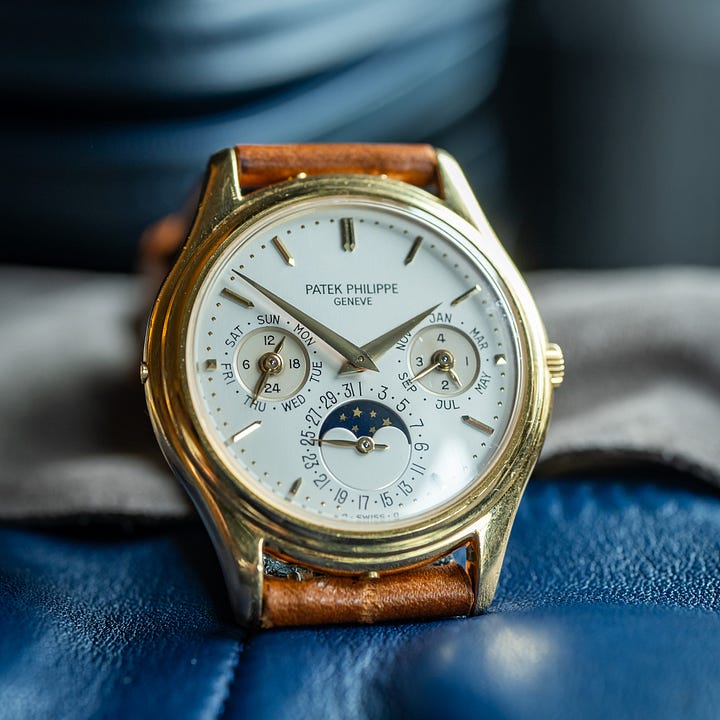
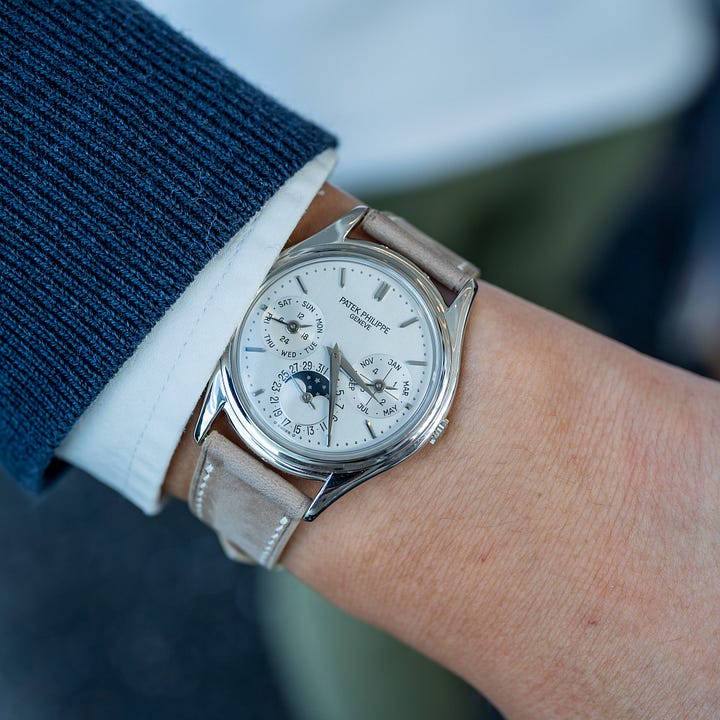
The other day, I was listening to one of my favorite watch podcasts, Hairspring, minding my own business and enjoying the nice fall weather. The two hosts were discussing the large and increasing premium between a first and third series Patek 3940 perpetual calendar, and then I heard myself being put on blast!
See, I’d reached out to my buddy Erik of Hairspring for quotes for a GQ article a few months back. Erik gave some extremely wise thoughts that didn’t fit into that silly GQ pitch, but I’d been sitting on them to include in a future newsletter instead.
They were addressing the question of whether the premium is justified on a first series 3940 that sells for, say $120k, and a later third series that sells for half that. Here’s what Erik told me a couple of months ago:
“There are always the ‘special’ variants of storied references, and I believe most newer collectors undervalue them. For example, if you’re looking to buy a Patek 3940, you can get a third series for $60k. Or, go all the way to a Beyer first series where the most recent result was CHF 292k in 2023. Newer collectors look at that delta and think, ‘a small change in color and signature can’t possible justify a 5x value?’
The logical fail I see often is newer collectors anticipating that others will think this way too, and so eventually the normal variants have to catch up, right? This is almost never the case if you study prior examples. The value of the first series continues to climb at a rate much faster, and much further away from the third series. And there’s a whole section of buyers who only consider the most special or rare version of any given watch and are willing to pay what it takes to acquire one. That premium is unintuitive, but across Patek Philippe, Rolex, and nearly everywhere, it multiplies over time rather than evening out.”
He’s right: There’s basically an entire segment of collectors who only want the “best” or the first or something. This has been very obvious with the Patek 3940 and 3970 the past couple of years, where prices for early examples have grown much faster than on later series. It’s the same for A-Series AP Royal Oaks, brass Journes, or closed-caseback Lange 1s.
But it usually takes time for collectors to make these distinctions. In fact, if you use my market cap analysis, I might argue that early series 3970s/40s are still undervalued.
To take another example, the market is learning to value “Pre-A” or “Pre-Series” Breguet watches from the 80s at a premium. These are watches from before 1987 when Breguet introduced serial numbers ending in letters (A, B, C, etc.), and watchmaker Daniel Roth was still with the brand. It makes these Pre-A watches historically important for Breguet enthusiasts, not to mention rarer.
In our conversation about neo-vintage watches, Ben Dunn mentioned that the market isn’t always as sophisticated at making these distinctions. It makes sense: Breguet is a much smaller, niche concern than Patek Philippe.
But I always caution against pursuing rarity for its own sake. Eventually, it has to come back to the watches. The dial of a first series 3940 just looks a lot different than a later one. The subdials were hand-carved and harder to produce. This means production is much lower, but if you look at them, you’ll also understand: a first series 3940 still has vestiges of handmade watchmaking.
And if the market asks for a huge premium between two things, and you really, truly, just don’t get it? You might be able to save yourself some money.
But remember:
The Roundup
Notes on Monaco Legend’s auction this weekend. Here’s the catalog, usually the most fun curation for those who love to peruse vintage. The glossy black dial Rolex 6238 is perhaps my favorite watch of all time. You’ll find 6238s with glossy or matte dials, but the early glossy ones are something. This one’s not perfect—MLG calls its slight spotting a “stardust effect,” but it’s special (Lot 84, est. €200–400k). For those who claim to love shapes, how about this Baume & Mercier car watch? With Swiss tariffs still in place, it’ll be interesting to watch the auction season, and to what extent American bidders stay on the sidelines (I’d bet a lot…). I also really like this multiscale Vacheron 4072 chronograph that Andrea Parmigiani showed off as “his” a couple of years ago.
Pre-owned is The Story. Brands and retailers both want in, all because it’s how customers, especially young customers, shop now. According to the annual Deloitte Swiss watch industry report, 40% of Millennials or Gen Z plan to buy a pre-owned watch next year, and the main reason is because they’re cheaper. Here’s the full Deloitte report:
How the Swiss Army Knife is dealing with tariffs. “It’s a Swiss icon that is inseparably tied to the promise of ‘Made in Switzerland’ quality,” Carl Elsener, CEO of Victorinox, said. “Moving its production abroad would undermine the very essence of our brand.” (NY Times)
Rolex filed a trademark for Padellone, the collector-given nickname for its vintage triple calendar moonphase ref. 8171, Italian for frying pan. I’m not sure how I feel about brands claiming IP ownership over collector-created terms, but it’s most likely a move to protect a word associated with the brand for future heritage-driven marketing or campaigns.
A look at Mark Cho’s watch collection. One of my favorite people to listen to talk about watches and collecting. (Swiss Watch Gang)
Remember that antitrust case against Hermes for its Birkin bag allocation? It was dismissed. “It may be, as the plaintiffs suggest, that Hermès reserves the Birkin bag for its highest-paying customers, but that in itself is not an antitrust violation,” the judge wrote. It’s since been appealed, but for now, a small win for luxury brands that thrive on exclusivity.
Ikea put all its old catalogs online. Watch brands should do this.
Finally, I haven’t felt a need to have a terms of service beyond Substack’s standard policy, but the comments from last weekend’s Berneron review illustrate what I’d consider a violation. If you say someone has a “character flaw” or call people liars, among other things, you’ll get banned for at least a month. But I thought this went without saying!
I’ll be back in your inbox with a podcast interview later this week. Get in touch:
tony@unpolishedwatches.com
Tap the heart or leave a comment to let me know what you liked or didn’t. Seriously, it helps make Unpolished better.
You could also say that the very existence of a power reserve serves the same purpose.




